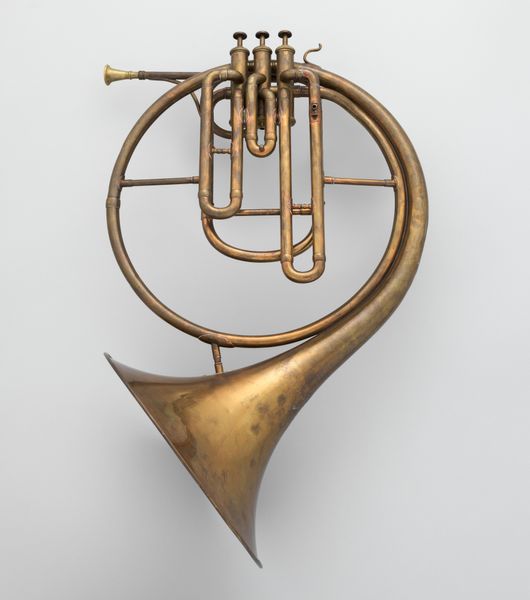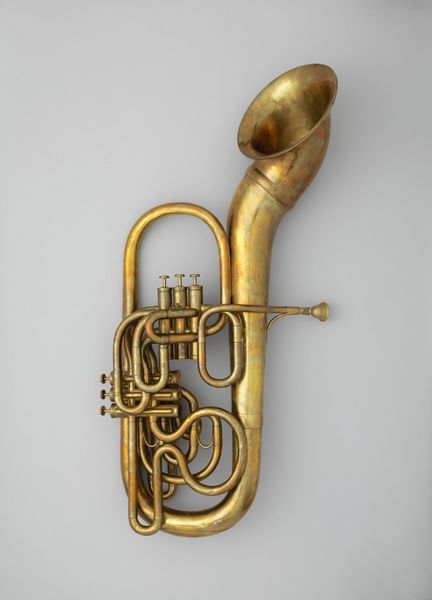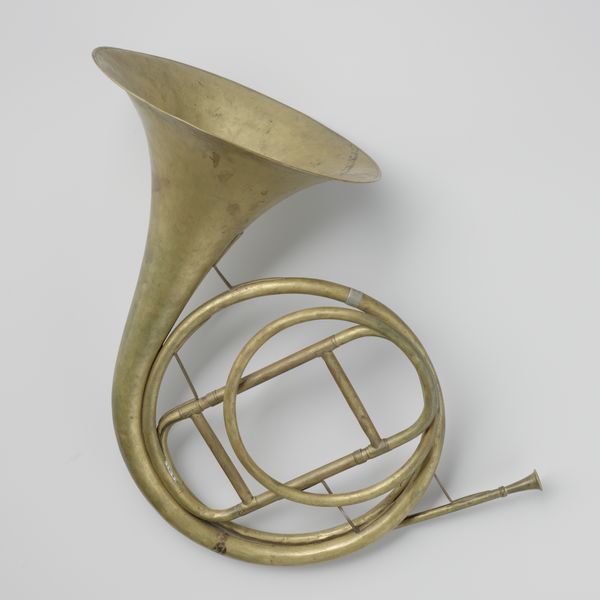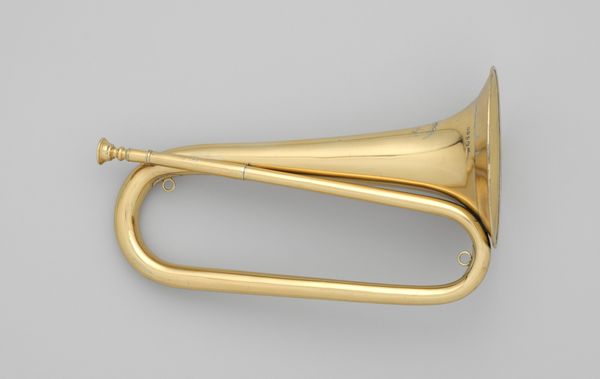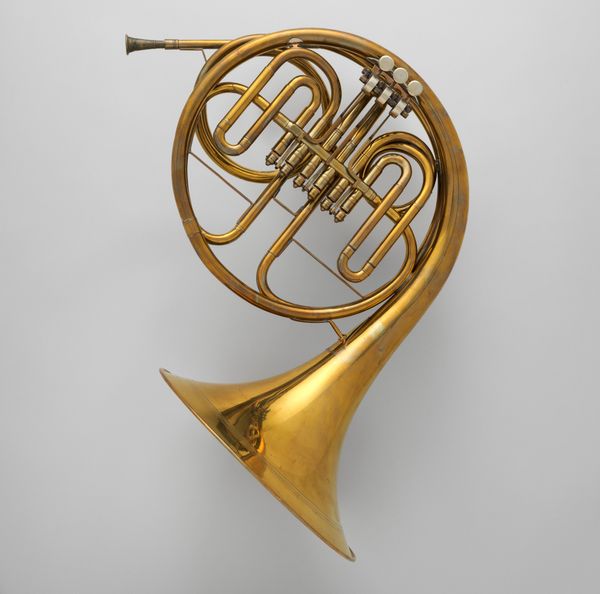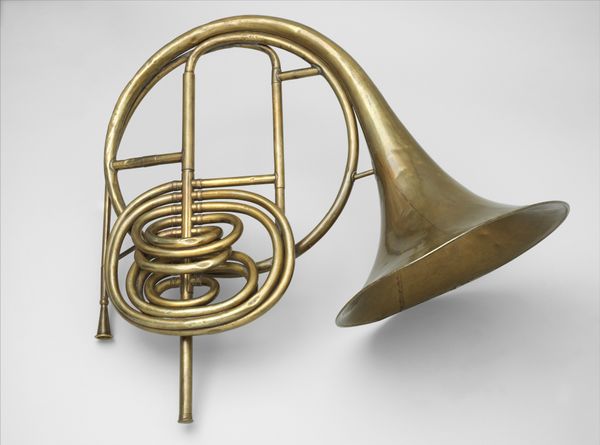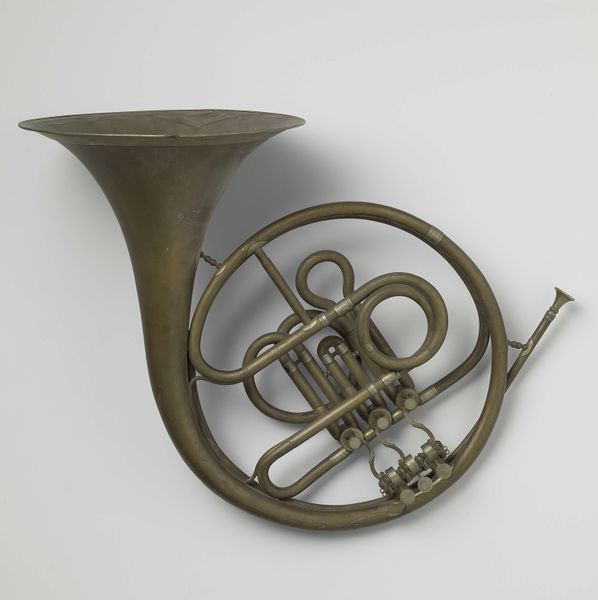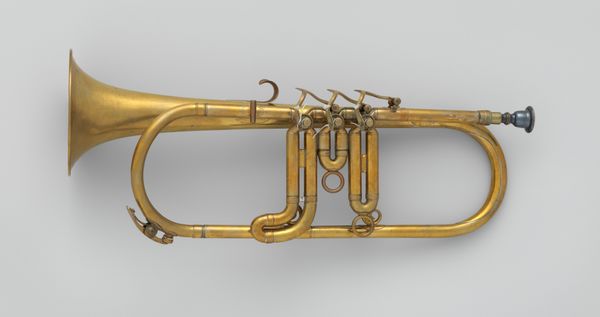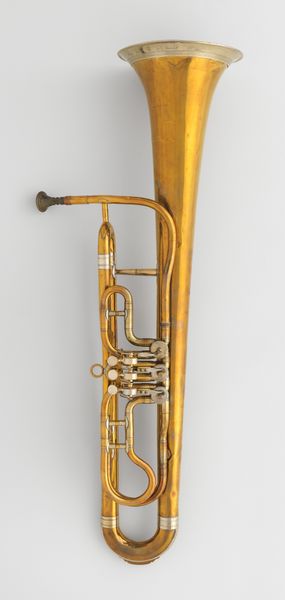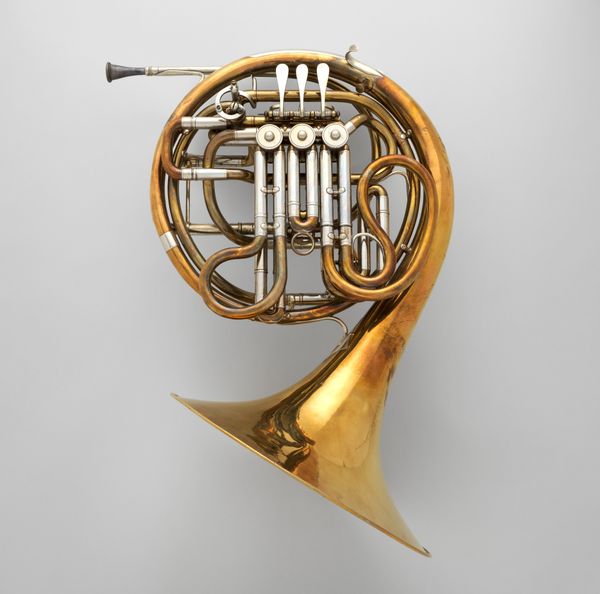
Dimensions: 51 × 36 1/2 × 12 1/2 in. (129.5 × 92.7 × 31.8 cm)
Copyright: Public Domain
Editor: Here we have Adolphe Sax’s "Bass saxtuba in E-flat" from 1855, a rather imposing sculpture fashioned from brass. It has such a…unique shape! It's so geometric, almost playful. What’s your take on it? Curator: This instrument strikes me as a powerful symbol of 19th-century ambition and the evolving role of music within society. Sax's invention occurred during a period of significant social upheaval and transformation, so how might this particular design contribute to, or challenge, those social dynamics? Editor: Hmm, I’m not sure. It's a musical instrument, how much could it challenge society? Curator: Well, consider that music was becoming increasingly accessible to the masses. Instruments like the saxtuba, designed for greater volume and projection, helped democratize access to musical expression. They amplified voices, quite literally. Editor: That makes sense, especially thinking about where it was made—France. What I still don't understand is how music plays a role in cultural movements, since the artwork description tags it as part of the Romanticism era. Curator: Romanticism championed emotion and individualism. Think about the potential of this instrument to amplify individual voices in increasingly large public settings. Doesn't the instrument's bold design also express something of that era's aspirations? Editor: I suppose it does. So the saxtuba embodies not just musical innovation, but a shift in how people could express themselves, a louder voice in a changing world. That's not just an instrument; it’s a cultural artifact! Curator: Precisely. And the legacy of Sax's innovations, from the saxophone to the saxtuba, continues to shape our musical landscape, influencing conversations about power and representation.
Comments
No comments
Be the first to comment and join the conversation on the ultimate creative platform.
